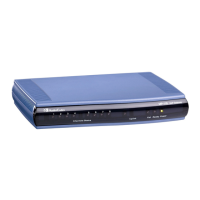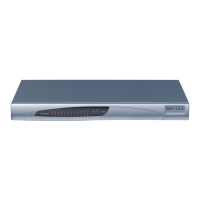Note: In this mode, DTMF digits are removed from the audio stream (and the 'DTMF
Transport Type' parameter is automatically set to Mute DTMF).
Notes:
• The device is always ready to receive DTMF packets over IP in all
possible transport modes: INFO messages, NOTIFY, and RFC 2833 (in
proper payload type) or as part of the audio stream.
• To exclude RFC 2833 Telephony event parameter from the device's
SDP, set the 'Declare RFC 2833 in SDP' parameter to No.
The following parameters affect the way the device handles the DTMF digits:
MGCPDTMFDetectionPoint, DTMFVolume, DTMFTransportType, DTMFDigitLength,
and DTMFInterDigitInterval
13.3.3.2 Configuring RFC 2833 Payload
The procedure below describes how to configure the RFC 2833 payload using the Web
interface:
To configure RFC 2833 payload using the Web interface:
1. Open the RTP/RTCP Settings page (Configuration tab > VoIP menu > Media
submenu > RTP/RTCP Settings). The relevant parameters are listed under the
'General Settings' group, as shown below:
Figure 13-7: RFC 2833 Payload Parameters in RTP/RTCP Settings Page
2. Configure the following parameters:
• 'RTP Redundancy Depth' (RTPRedundancyDepth) - enables the device to
generate RFC 2198 redundant packets.
• 'Enable RTP Redundancy Negotiation' (EnableRTPRedundancyNegotiation) -
enables the device to include the RTP redundancy dynamic payload type in the
SDP, according to RFC 2198.
• 'RFC 2833 TX Payload Type' (RFC2833TxPayloadType) - defines the Tx RFC
2833 DTMF relay dynamic payload type.
• 'RFC 2833 RX Payload Type' (RFC2833RxPayloadType) - defines the Rx RFC
2833 DTMF relay dynamic payload type.
• 'RFC 2198 Payload Type' (RFC2198PayloadType) - defines the RTP redundancy
packet payload type according to RFC 2198.
3. Click Submit to apply your settings.

